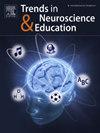从教师的角度看:神经神话及其在马来西亚课堂上的应用
IF 3.4
Q2 NEUROSCIENCES
引用次数: 0
摘要
教师对神经科学及其在教育中的应用的误解可能导致教学策略无效,浪费宝贵的资源。本文的主要目的是研究神经科学知识,对神经神话的信仰及其在马来西亚课堂上的应用。对501名学校教师进行了网络调查,调查内容包括14个神经事实、4个神经神话及其在教育中的应用。结果显示,超过75%的所有经验水平的教师都赞同“当个人以自己喜欢的学习方式接受信息时,他们会学得更好”这一毫无根据的观点,其中80%的教师赞同在教学实践中应用VAK理念。研究结果还表明,神经神话一致性与实践一致性正相关(r = 0.181, p <;0.001)。有趣的是,来自不同国家的许多研究都强调了神经神话的盛行,马来西亚也不例外,而且在各国之间都是一致的,特别是关于学习风格的信念。随着伪科学实践在世界各地的学校教师中越来越流行,许多热衷于将神经科学发现可能应用于课堂的教育工作者发现很难区分伪科学和科学事实。本文章由计算机程序翻译,如有差异,请以英文原文为准。
Seen through teachers’ eyes: Neuromyths and their application in Malaysian classrooms
Misconceptions about neuroscience among teachers and their application to education may lead to ineffective teaching strategies and waste valuable resources. The main objective of this paper is to study neuroscience knowledge, beliefs in neuromyths and their application in Malaysian classrooms. An online survey was conducted among (n = 501) school teachers, covering 14 neurofacts, four neuromyth, and their application in education. Results show more than 75 % of teachers of all levels of experience endorsed the unfounded idea that 'Individuals learn better when they receive information in their preferred learning style and 80 % of these teachers endorsed applying the VAK idea in their teaching practice. The findings also show that neuromyth agreement was positively correlated with practice agreement (r = 0.181, p < 0.001). Interestingly, numerous studies from various countries have highlighted the prevalence of neuromyths, and Malaysia is no exception and consistent across countries, particularly regarding beliefs about learning styles. With the growing popularity of pseudoscientific practice among school teachers worldwide, many educators who are enthusiastic about possible applications of neuroscience findings in the classroom find it difficult to distinguish pseudoscience from scientific facts.
求助全文
通过发布文献求助,成功后即可免费获取论文全文。
去求助
来源期刊

Trends in Neuroscience and Education
NEUROSCIENCES-
CiteScore
6.30
自引率
6.10%
发文量
22
审稿时长
65 days
 求助内容:
求助内容: 应助结果提醒方式:
应助结果提醒方式:


